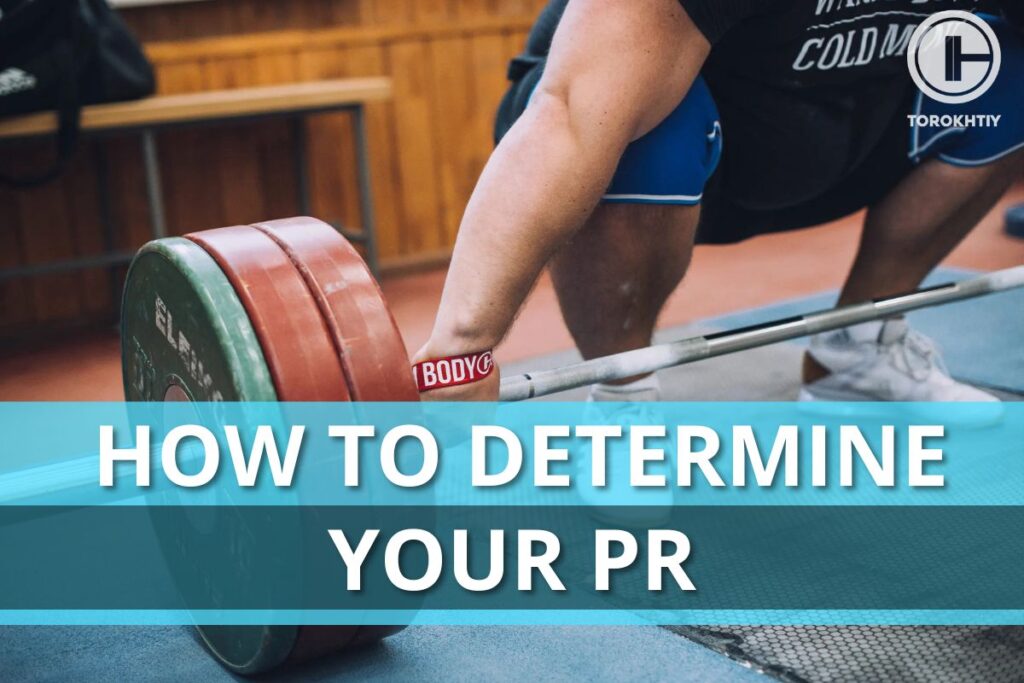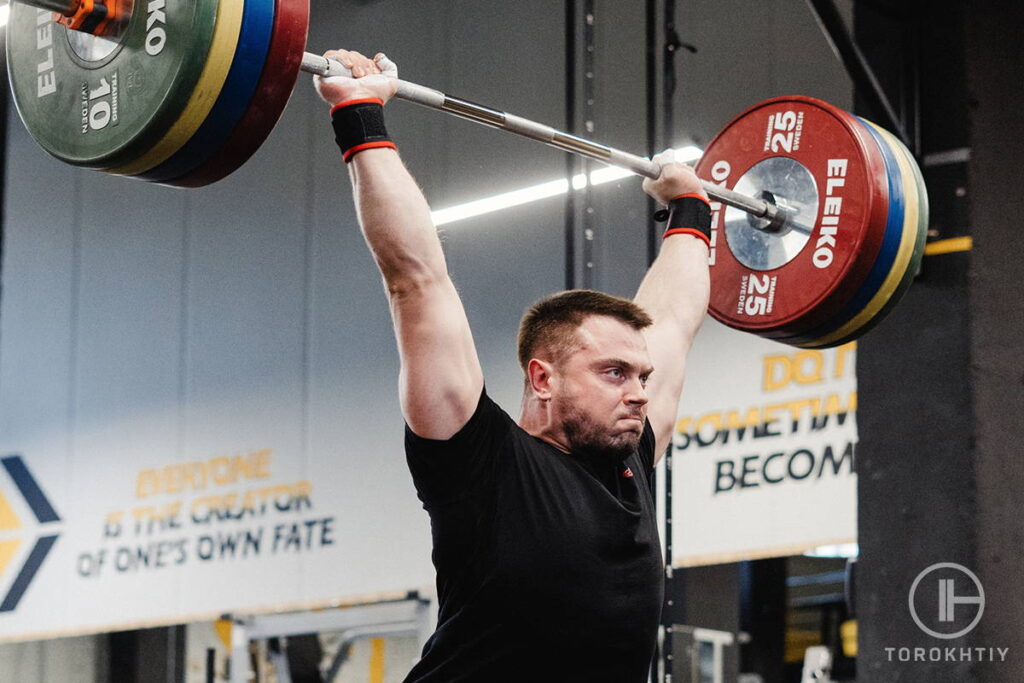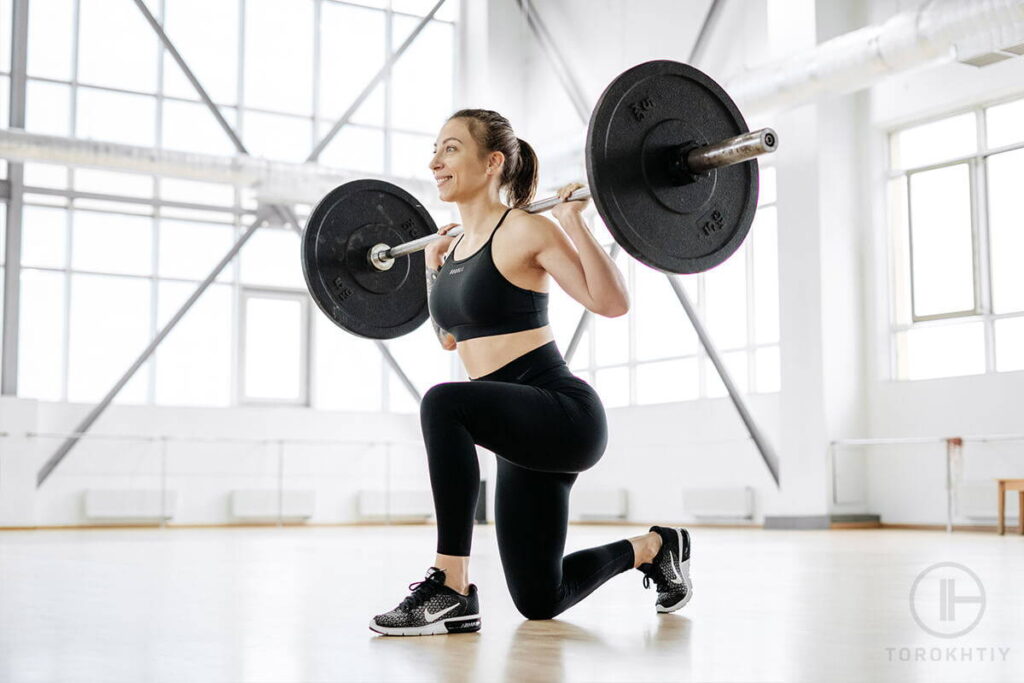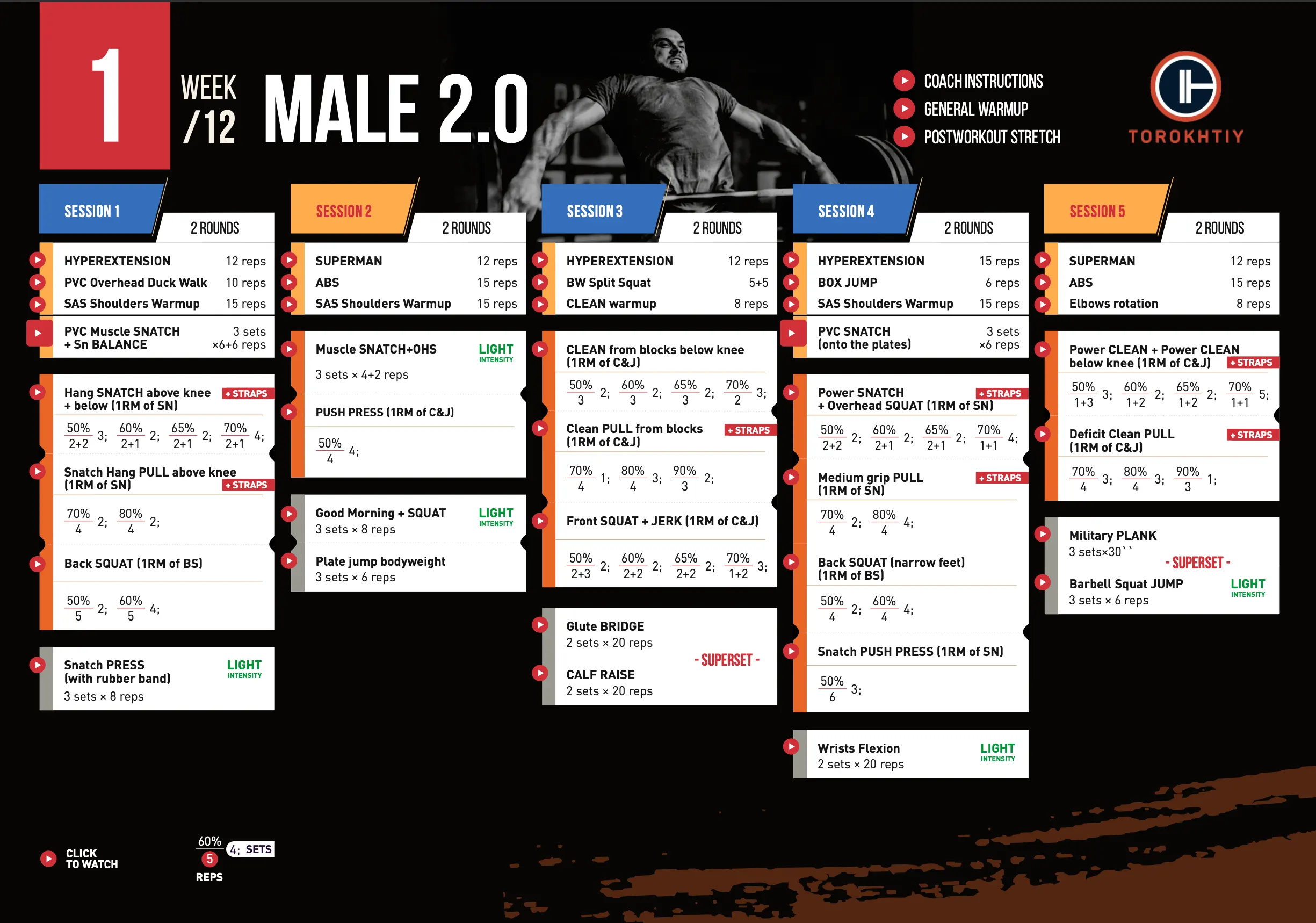How To Determine Your Pr
Author:
Unlock your full potential by engaging with our experts and community! Have questions about your fitness journey or looking for expert advice on weightlifting techniques? Don’t hesitate — leave a comment below and Sergii Putsov will provide a personalized answer and insights to help you reach your goals.
Torokhtiy is reader-supported. Some links are affiliate links, and we may earn a commission at no extra cost to you. See our disclosure page for details.

This article also available as audio. Check this out!
Subscribe and listen it anywhere:
Modern weightlifting realities differ completely from those times when I first started going to the gym, where only young guys from 12 to 22 were trained and one would hardly ever meet someone older. A friend of my coach, for example, was a 35-year-old weightlifter (or even older) and everybody considered him old. He came to train, telling us stories about how long ago he was able to do a clean and snatch.
But times have changed (and very unexpectedly for me) and continue changing. I dare say that nobody could have imagined how popular weightlifting would become one day, or that the number of participants in the American Open would be about 700-800 people, or that competitions would last a week on three platforms simultaneously. I have to admit that I wouldn’t believe it if I didn’t see it with my own eyes.
You may like it:
- Detailed Olympic Weightlifting Program For Beginners
- 12-Week Weightlifting Program For Women (Detailed Example)
- Create Your Olympic Weightlifting Program (Examples Included)
The fact that many functional training clubs build separate weightlifting zones and offer a separate membership speaks louder than anything else. It’s not just young athletes who actively train, but also 30 year olds and older – both men and women. This is already something very common in the USA, Canada, South America and Europe.
It´s important to highlight that taking weightlifting for granted doesn’t make much sense. Practice shows that those who fall in love with the iron game prefer a well-planned training process and about half of the athletes do it with the purpose of performing at competitions of different levels: small gym competitions, state championships, national competitions … it is gratifying to note that there are many competitions held in the US nowadays, for example.
Follow us!

Free!
Get a 2-week Weightlifting Program as a bonus for the subscription to kickstart your training plan!

Free!
It’s no secret that the weightlifting essence isn´t in 3 sets 12 reps, but in lifting the barbell as heavy as you can for 1 rep. Well, the whole training essense lies in increasing one´s own records. Here I would like to clarify that the important point is a REASONABLE approach to training in terms of health and safety.
When it comes to kilograms (or lbs) on the barbell, beginners tend to do back squats with a barbell equal to their body weight, then in front squat, then clean it it and snatch it. I think this is quite possible for healthy men and achievable after several years of systematic training. Anything superior to this is closer to professional sports, which is a slightly different dimension. When I was a child, I found a 100 kg snatch very motivational, because our coaches always said that an athlete became a real man only after overcoming a 100 kg barbell in a snatch.
I often have to deal with a situation where athletes train on programs that simply indicate the exercises, sets and repetitions, but the weight is not specified at all, or there is only a light / medium / heavy gradation.

They can’t even answer a question about the exact weight they lift, so they just say, “I have never participated in competitions” or “I can do heavy clean, but can’t do jerk” or “I haven’t trained a snatch for a while”.
That is quite understandable, because the number of weightlifters is growing and the number of coaches isn´t sufficient at all. Also, it is very common in the USA to train independently in one´s garage.
In most of the cases, training programs are written in percentages: all snatch exercises are calculated from the best snatch, clean and front squats from the C&J, back squat from back squat. Constructing training programs taking into account the best result percentage gives an opportunity to objectively and accurately assess the training process, as well as compare the dynamics of loads in different training periods and apply various model characteristics for its analysis.
This approach was used in the USSR national team work in the 70s, as well as in children’s schools, and many leading trainers work this way even now.
And what if you do not know your PR because you’ve never tried to do a snatch and clean to the maximum or after a certain break you haven´t got back in shape, but you want to understand the level of your preparedness?

There is an answer to this question. The experience of training highly qualified athletes allowed us to find a certain connection between auxiliary exercises and competitive ones. It should be remembered that these model characteristics are not super precise and are applicable to athletes whose training experience is more than 2 years.
You can see below an approximate ratio of auxiliary exercises to competitive in %.
For snatch:
Power SNATCH – 85-88 % = 1 SNATCH RM
Hang SNATCH – 91-98 % = 1 SNATCH RM
Block SNATCH – 96-98 % = 1 SNATCH RM
OHS – 106-110 % = 1 SNATCH RM
For C&J:
Power CLEAN – 84-88 % = 1 C&J RM
CLEAN – 101-104 % = 1 C&J RM
Hang CLEAN – 91-95 % = 1 C&J RM
JERK from rack – 100-102 % = 1 C&J RM
Power JERK – 89-93 % = 1 C&J RM
Front SQUAT – 109-118 % = 1 C&J RM
Back SQUAT – 128-140 % = 1 C&J RM

These numbers and models certainly will not give you a guarantee that after an 85 kg Power SNATCH training you will lift 100 kg at the competitions, but the probability of this is quite high. It must be understood that the results in auxiliary exercises show your potential readiness. It is essential to know and to comprehend this as this knowledge will help you to more accurately design your training program or understand from which results to calculate your training percentage. Well, if this potential is going to be fulfilled or not at competitions depends on many factors.
In conclusion, an interesting sports story.
Remembering the good old days in the junior team, our coach always said that we were supposed to be ready to lift 70% in any conditions, even after a long break, because we were members of the national team of the country.
In the adult team the standards were much higher. When we had only arrived at the national team training camp to prepare for the World Championship, the head coach first announced the control training without warning and everyone did MAXOUT in snatch and C&J. As a rule, he stopped us at about 85%, but those athletes who did not lift 80% could be dismissed from the training and kicked out of the team. Believe me, this greatly raised the motivation and working mood in the team.
TRAIN TOGETHER – TRAIN RIGHT
Related articles:
You might be interested in:
Why Trust Us?
With over 20 years in Olympic weightlifting, strength training, nutrition coaching, and general fitness our team does its best to provide the audience with ultimate support and meet the needs and requirements of advanced athletes and professional lifters, as well as people who strive to open new opportunities and develop their physical capabilities with us.
By trusting the recommendations of our certified experts in coaching, nutrition, and sports training programming, as well as scientific consultants, and physiotherapists, we provide you with thorough, well-considered, and scientifically proven content. All the information given in the articles concerning workout programming, separate exercises, and athletic performance, in general, is based on verified data.
The product testing process is described in more detail here.
Author: Sergii Putsov
Head of Sport Science, PhD
Best Results: Snatch – 165 kg,
C&J – 200 kg
Sergii Putsov, Ph.D., is a former professional weightlifter and National team member, achieving multiple medals in the 94 kg weight category at national competitions. With a Master’s degree in “Olympic & Professional Sport Training” and a Sport Science Ph.D. from the International Olympic Academy, Greece, Sergii now leads as the Head of Sport Science. He specializes in designing training programs, writing insightful blog articles, providing live commentary at international weightlifting events, and conducting educational seminars worldwide alongside Olympic weightlifting expert Oleksiy Torokhtiy.









Still have questions after reading our article? Unlock your full potential by engaging with our experts and community! Don’t hesitate — leave a comment below and Sergii Putsov will provide a personalized answer and insights to help you reach your goals.